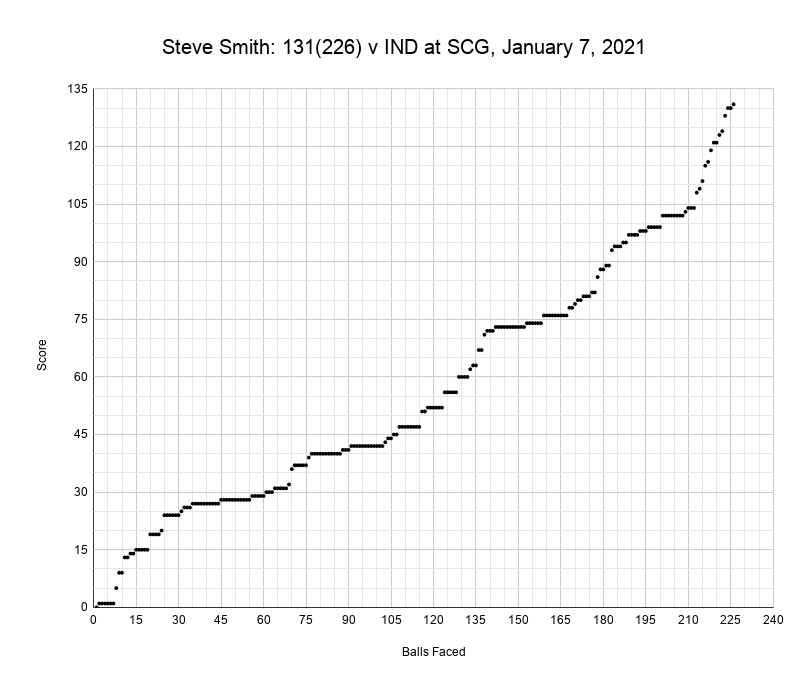Australia began Day 2 at 166/2 in 55 overs after a rain affected Day 1. Steve Smith began the day watchfully. It took him 52 balls to advance from 31 to 50. The wicket was playing well. The bowling was good enough to keep the batsmen honest. He was most watchful against Siraj and Bumrah, taking 13 runs off 50 balls against them. Jadeja and Ashwin were easier to score off, especially because neither defended the boundary and kept the field up. It took Smith 171 balls to reach 80. He scored 51 more in 55 balls.
That is how Test innings progress. Scoring is rarely steady unless the bowling is nondescript. Bowling attacks try to control the scoring, and batsmen usually keep an eye on where they’re more likely to be able to score runs. On Day 1 for instance, Australia reached 150/2 after 44 overs with two reasonably well set batsmen at the crease (Smith had been in for 30 balls, Labuschagne for 112). They shut shop for the last 11 overs and scored only 16 runs.
Batsmen don’t do this because they don’t want to score runs. Batsmen do it because they’re trying to stay in and advance their team’s position. They also do it because the longer bowlers have to bowl, the more tired they are, and the more likely they are to provide hittable bowling.
When India batted, a similar thing happened. They reached 84/1 after 30 overs. They ended the day on 96/2. Shubman Gill was dismissed off the first ball of the 33rd over just after reaching his 50. With two new batsmen at the wicket, and only 12 overs remaining in the day, the priority was to maintain the team’s position and keep eight wickets in hand at the end of the day. Australia had also changed their approach after all out attack in the early overs proved ineffective because there was little encouragement from the conditions. They used Nathan Lyon to the usual 3-6 field at one end, and used Hazlewood and Cummins to attack the stumps at the other. Once the bowling side took this attritional approach, the batsmen had two options - take chances for a few quick runs near the end of the day, or stay in and try and get set. Unsurprisingly the batsmen took the professional approach and played for stumps.
Could such an approach result in wickets? Perhaps. But its still a sound approach. The Australians will not offer easy overs until they’ve been bowled into the ground. On this wicket, which offers little help off the seam, shells are a viable refuge.





An engrossing day of Test cricket. I look forward to watching more tomorrow. May those of us who are watching be as patient as the players.